 Originally published October 11, 1996, in Comics Buyer’s Guide #1195
Originally published October 11, 1996, in Comics Buyer’s Guide #1195
I think I finally understand Rob Liefeld. Which is cold comfort I suppose, considering the last couple of weeks he’s been having, but there it is.
Several things crystallized this newly-found comprehension for me.
First and foremost was the publication of the first issue of his new Captain America. Not since that security guard in Atlanta was raked over the coals during the Olympics (in a still-pending investigation) has any one individual been accused of perpetrating a bomb on unsuspecting Americans before all the evidence was in.
Then, when the book did come out, computer postings seemed to dwell with incredible hostility on every single art gaffe. I do not except myself here; after all, I had the characters make fun of their own goof-ups and inconsistencies in the previous installment of this column. The moral of that particular story being: Never release undialogued black-and-white versions of your work. It makes it too easy. (Although at least somebody caught the nine-button phone keypad just before the book went to the printer and added in the AWOL remaining three buttons. Now if only they’d thought to add a slot for the coin, or a receiver that looks like a receiver rather than a Lady Bic electric shaver.) And then there’s that classic first page, as pointed out by retailer Bob Kane (no relation) at Destiny Comics in Long Island: wherein one World War II soldier is wielding a gun apparently never used on this planet, much less in WWII, while another soldier, seemingly not trusting the bizarrely constructed weapon (who can blame him?) is simply firing blasts directly out of his hand. He’s miming holding the gun, but there isn’t anything there, yet something is shooting.
And then there’s—ah, but I swore I wouldn’t get into that.
But what really put me into the “right” frame of mind regarding Rob was that I started dwelling on movies. Specifically, Marvel movies. I was thinking about the spate of Marvel films some years back, both TV and theatrical—the ones where unilateral changes were made for apparently no rhyme or reason.
Like the Captain America TV movie with the clear plastic shield.
Or the Incredible Hulk movies that introduced Thor or Daredevil, who were the Marvel characters in name only, as we agonized over watching Don Blake become a channeling device for Thor the Norse biker warrior. Or Daredevil wearing a wrestling outfit with a blindfold over his face, advertising to the entire world that he was blind (although effective performances by Rex Smith as Murdock and John Rhys-Davies as the hirsute Kingpin salvaged it to some degree).
Or the Dr. Strange TV movie, which really wasn’t half bad, but if the name had been changed to Mystic Man, the film would have worked exactly the same with no recognizable connection to Doc Strange. In fact, Full Moon’s straight-to-video Doctor Mordrid felt more like a Dr. Strange movie than Dr. Strange did. And, of course, there was the Incredible Hulk TV show, which worked to a degree because of Bill Bixby’s quiet sincerity, and because it was basically a rehash of the TV-friendly The Fugitive (which in turn was a rehash of Les Miserables, and God only knows where Victor Hugo got it from), thereby making it easy for viewers to get a handle on.
But there were no Rick Jones, no Betty, no Thunderbolt Ross, no Gamma Bomb, and no words out of a seriously depowered Hulk. (And I’m still fielding questions from comic book outsiders who are surprised there’s still a Hulk comic, because they saw The Death of the Incredible Hulk, in which the Hulk died falling from a helicopter. And I explain to them that the Hulk could fall from orbit and just dust himself off and walk away.) Basically we had a Dr. Banner who was Banner in name only (and not even the same name) and a Hulk who bore no resemblance to the comic book perception of the character (but, then again, fans of the original Hulk have made the same complaint about my treatment of him, so perhaps I shouldn’t point fingers).
And stuff like this drove the fans nuts. The sentiment was, “Why can’t Hollywood do the characters right?” And “right” had only one meaning: Do them as they had been done in the comic books. Don’t mess with the costumes. Don’t muck with the origins. Stan Lee and Jack Kirby knew what they were doing and produced stories that withstood the test of time. Who in hëll were these California guys to come in and completely retool the very beginnings of these characters? To re-envision and reinvent them, to tell the stories differently? To call characters by names that had no relation to their comic book counterparts? Well, Marvel heard the complaints. Marvel was unhappy with the results. And Marvel swore it would take a firmer hand on the TV versions of its characters. When next you saw movies featuring the Marvel heroes, it would be with scripts that were faithful to the roots of the Marvel universe.
And what has happened since that pledge? Well… lessee… While the wretched Captain America movie languishes on a few video shelves, and while the ultra-cheapo and fairly dull Fantastic Four movie shows up in the pirated boxes of video dealers at conventions…
The comic books became the movie versions.
Rather than protect the Marvel roots, Marvel tempted root rot by welcoming the movie mindset into its own doors.
California guys have come in and been invited to do “versions” of the classic Marvel characters with no requirement of fealty to the originals. Many of the characters trotting through the pages of the new and improved “Heroes Reborn” comics bear as much resemblance to the original characters as Biker Warrior Thor did to the Son of Odin.
For what reason? To keep up with the fast-paced ’90s as opposed to the more leisurely ’60s? Hot news flash: The first issue of the new Fantastic Four took 40 pages to tell one half the story that Stan and Jack told in one half the pages at 1/30 the price. This isn’t to say it’s necessarily bad. It’s just different. And many fans equate the latter with the former. (Although curiously, despite all the changes that were made, the one thing that had me teed off was that creature calling itself “Wyatt Wingfoot.” I don’t know who or what the hëll that was, but it weren’t no Wyatt Wingfoot.)
But, in the meantime, where are we seeing strict fidelity to the original versions of the Marvel characters? From Hollywood, particularly in animation. The producers of the upcoming Incredible Hulk animated series are promising stories evocative of the original jade giant. And taking it away from Marvel for a moment, many fans claimed they preferred Batman: The Animated Series to the comic book, and the new Superman animated series is being welcomed with open arms.
So it’s done a complete 180. Fans look to the TV for the “real” versions of the characters, and to the newsstands for redos of the original tales which seem capriciously changed.
Which brings us back to Rob Liefeld.
The thing is, the story in Captain America #1 isn’t that bad. I mean, it’s not that good, but it’s not that bad. Standard-issue Guy-With-A-Past-He-Doesn’t-Know stuff. Been there, done that, but not enough to send you screaming into the middle of the interstate or anything.
But the art is. The art is beyond that bad. No offense, but Rob’s artwork has reached a point where one almost expects Rob to come home one day and find John Byrne, John Buscema, and John Romita, Sr. waiting for him. Teamed like the Three Tenors, the Three Johns would pounce, tie him to a chair and do what we in the industry call a BAI: Bad Art Intervention. I fully believe that after 72 straight hours, they could probably hammer enough fundamentals into him that you’d see 100% improvement in his future work. If it takes longer than that, then the book could be produced in the interim by strapping a #2 pencil to the guide pointer of an Ouija board, putting it atop a piece of Bristol board, and letting Jack Kirby pencil it from beyond.
But wait, you say! Peter, you’ve hosed us! You implied that this column was to be supportive of Rob, not scathing!
And so ’twill be, for let us go on in the fairly safe assumption that said intervention will not take place. Let us further assume that Rob is not going to improve.
Maybe he doesn’t have to. Maybe we’re looking at his work the wrong way.
Because it’s clear that what Rob does have is enthusiasm. Enthusiasm by the carload, by the boatload, by the motherlode. I think he (as do Jim Lee and everyone else, really) genuinely has a fondness for the characters. But, where Jim draws comics, Rob draws criticism. Yet, curiously, of all the new relaunches, I found I was most interested to see where the hëll Rob was going with this thing. And I couldn’t quite figure out why, because every other book was technically superior—indeed, was superior.
So what was it about Captain America that caught my attention? Especially because the artwork was so bad, so inconsistent, so unrelated to the real world, so inept in terms of its continuity. And that’s where the movie connection clicked in for me.
Perhaps we’ve all been making a mistake about Rob. It’s a natural mistake to make. What we’ve been doing is comparing is work to that of other comic book artists.
But Rob is a child of movies, citing such flicks as Die Hard as being seminal influences on his work. And when we think of Rob in movie creator terms, it makes sense. As a writer, Rob isn’t Stan Lee. As an artist, he isn’t Jack Kirby. But if we think of him as a creator—particularly a movie creator—then we’ve got a bead on him.
As a creator… he’s Ed Wood.
At the very least, he’s the Ed Wood of the Tim Burton film Ed Wood. Someone of boundless zeal. Someone who feels he has stories to tell, can see them in his head, but doesn’t have the ability to actually get them down visually in any sort of coherent or aesthetically pleasing manner. Orson Welles without the talent. But Ed Wood films have achieved a status all their own. They’re acid trips for the drug-free. They’re films where we marvel at the ineptitude because it’s just so bad that it’s hypnotic. Ed Wood didn’t give a dámņ about continuity, or coherence, or anything. Granted, Rob Liefeld is working on a more leisurely schedule than Wood, with plenty of time to go back and redraw. Wood was working on insane shooting schedules with no money, so one could argue that his lack of caring about detail was strictly due to the circumstances under which the films were made. But the more fun view (and certainly the more appropriate for this column) is the version of Wood in the Scott Alexander & Larry Karaszewski script for the Burton film. At one point during the filming of Plan 9 From Outer Space, Wood’s backers challenge his technical ability by pointing out that Wood has deemed “perfect” a take wherein cardboard headstones in a graveyard are knocked over by a stumbling actor. And they complain about the numerous discontinuity shifts between daytime and nighttime.
And an enraged Wood, played by Johnny Depp, retorts, “Film making isn’t about the tiny details. It’s about the big picture! Haven’t you people ever heard of suspension of disbelief?”
Perhaps Rob Liefeld produces work in that spirit. Perhaps he considers what we feel important (continuity, correct perspective, proper anatomy, story telling) to be mere tiny details. What many have deemed simple laziness on his part may be more than that. Maybe it’s not laziness. Maybe, to Rob, it’s just irrelevant. He has an image (appropriately) in his head—the big picture—and when he looks at the final version, all he sees is what he’s picturing from his imagination, rather than the reality of what’s there.
So perhaps what we should do when reading a Rob Liefeld comic—rather than carp on the endless gaffes—is to embrace them. Be amused by them in the same way that we giggle at the hokey flying saucers and mismatched shots in Plan 9. Perhaps, like an Ed Wood film, a Rob Liefeld comic should be of interest not in spite of the artistic mess-ups, but rather because of them.
Or—to paraphrase Criswell—
You say, “Prove that it’s true.” I say, “Prove that it isn’t.”
(Peter David, writer of stuff, can be written to at Second Age, Inc., P.O. Box 239, Bayport, NY 11705. And if you think this column is the worst you’ve ever seen, well, my next one will be better! Hello? Hello…?)
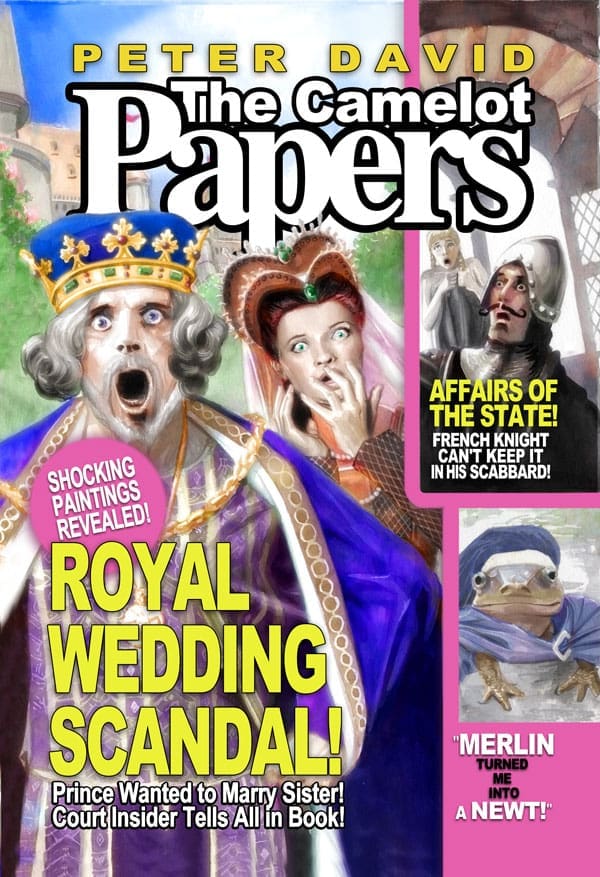
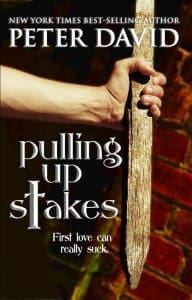
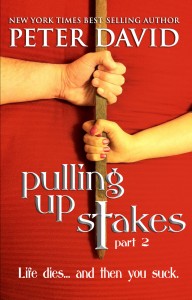
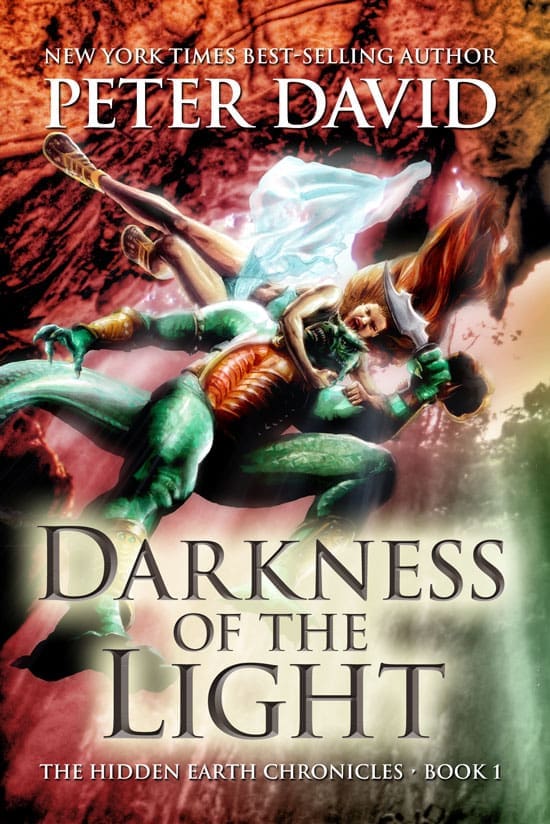
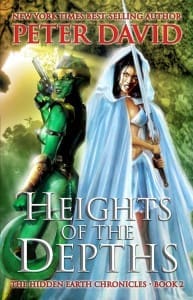
Never saw this article before, or heard the theory. But dámņ, if I wasn’t completely taken in by it.
.
Rob Liefield is Ed Wood.
.
But he has yet to make his Plan 9 masterpiece.
Coincidentally, today is the birthday of Matt “Captain America” Salinger.
For anyone who wants a real laugh, I recommend The 40 Worst Rob Liefeld Drawings at http://www.progressiveboink.com/archive/robliefeld.html. I can no longer look at a piece of Liefeld art without counting fingers or trying to see what he’s hidden his character’s feet behind so he doesn’t have to draw them. i remember in the good old days, a lot of fans compared his work to Kirby but most of them failed to make an important distinction. Kirby was an accomplished draftsman, who understood the basic elements of storytelling before he stretched some of them to the breaking point. If a young artist simply aped Kirby without understanding how or why he made those shortcuts, you simply got an artist who was a copy of a copy. I always place Liefeld into that category, as opposed to artists like Keith Giffen or Barry Smith who experienced their own brief flirtations with the Kirby style before finding their own artistic voices.
The MMORPG Champions Online recently introduced what they’re calling the “Iron Age costume set” – basically, a set of costume pieces paying homage to the artwork (and sometimes “artwork”) of ’90s comics.
.
There were those claiming, based on preliminary artwork, that it should have been called the “Liefeld set”. I was among those making the point that in order to be a Liefeld costume set, the shoulder pads needed to be even more exaggerated, the guns bigger, the boot options would need to turn the feet into useless little lozenge-shaped flippers (or, ideally, hide them behind other objects constantly), and the female poses would have to be positions that would shatter the spine of a normal woman. Oh, and the head slider for the males would have to be automatically set to minimum size, and they’d have to add a “grimace” option to facial expressions.
And pouches, Jonathan; lots of pouches.
.
Please, don’t insult Ed Wood like that.
.
And Rob likely never looked as good as Ed in a dress.
Ed Wood had dresses, Rob Liefeld has his jeans!!
PAD’s Liefeld-Wood comparison is certainly intriguing, but I fear it takes epic non-talent to qualify as “so bad it’s good,” and despite the hysterical website referenced by Joe, above, I don’t think Liefeld’s work is that epic to qualify. If anything, it’s like most of the MST3K movies, that are hysterical to see with commentary, but just painful to watch on their own.
The comparison is unfair… to ED Wood. At least, Mr. Wood had something important to say in Plan 9 (that the race for bigger and better nukes would mean the end of us all). In the comics he wrote, I don’t think Liefeld had something interesting to say. In fact, the only thing of his that I liked was the Hawk and Dove mini-series, and it was only because Karl Kesel saved the art (so much for those who think of inkers as “tracers”).
This column reminds me of the most recent Supor Stupor comic at the Something Positive website. They make mention of Liefeld Syndrome, which apparently shrinks your head and feet while causing arousal around pouches.
As opposed to Green’s Disease, where all your joints are ball joints and you spasm into poses.
.
http://somethingpositive.net/#superstupor
Pardon my ignorance, but who’s the referred to Green? The only Green that comes to mind is Dan Green.
Something I truly believe is that Rob Liefeld would make fantastic animated movies. It could be animated in either Anime style or classic western animation (no Hanna Barbara stuff please) and it would be incredible.
Ah, I remember this column as well. Good one, Peter.
.
Peter David: Although at least somebody caught the nine-button phone keypad just before the book went to the printer and added in the AWOL remaining three buttons.
Luigi Novi: I think it would be more accurate to call them MIA rather than AWOL. “AWOL” implies that they ran off of their own accord without asking for permission to go. It would more accurate to say that they were missing.*/b>
.
John: But he has yet to make his Plan 9 masterpiece.
Luigi Novi: What do you call everything he’s done since the latter part of his run on New Mutants?
.
Gerard: The comparison is unfair… to ED Wood. At least, Mr. Wood had something important to say in Plan 9 (that the race for bigger and better nukes would mean the end of us all).
Luigi Novi: Well, maybe Rob was saying that the race for bigger and better muscles, shoulder pads and pouches would signal the end of a lot of the comics industry and fandom. When you consider how the industry’s health changed during Rob’s heydey, there may be something to that. 😉
.
Gerard: so much for those who think of inkers as “tracers”).
Luigi Novi: Has there really ever been any substantial number of people in fandom or the industry who think this? I’ve been a fan of comics and the industry for about 24 years, and the only place I’ve ever heard this was in Chasing Amy, so I just assumed Kevin Smith made up that notion solely for that film, inaccurate as it was. I can’t imagine any who has been a fan to any substantial degree who has looked at pencil work and inked artwork, and especially the work of inkers like Terry Austin, and came away thinking that inkers are just tracing.
.
.
.
.
*Yes, I understand that in military parlance, “MIA” also refers to persons that “were there” at some point before they went missing. But cut me some slack. It’s a metaphor about bad superhero comic art. 🙂 )
The Hanstock and B piece is a good analysis, but it failed to include the single most egregious piece of Liefeld art ever. Probably you’ve all seen it, but just in case:
http://www.anawfulart.com/captain-america-by-rob-liefeld/
AAAAAAAAAAAAARRRRGH ! I’ve seen it before, but even after all these years, it still hurts my poor myopic/presbyotic/astigmatic eyes. Quick, some art by Georgte Pérez or Eduardo Barreto to calm the pain!
Blasphemers!
http://blog.adlo.es/d_for_defense/2012/01/
(English translation of a spanish blog)
I think of Liefild as the Uwe Boll of comics.
.
I agree that he has a lot enthusiasm and that he seems to love the medium but lack the talent. In a way I envy him that even though he is considered a joke by many he works doing what he loves.